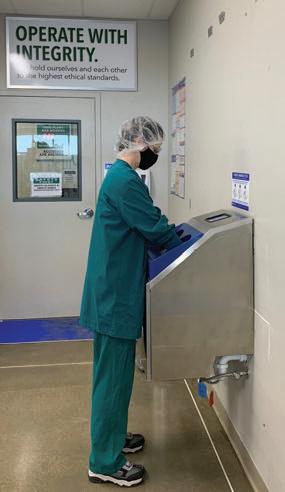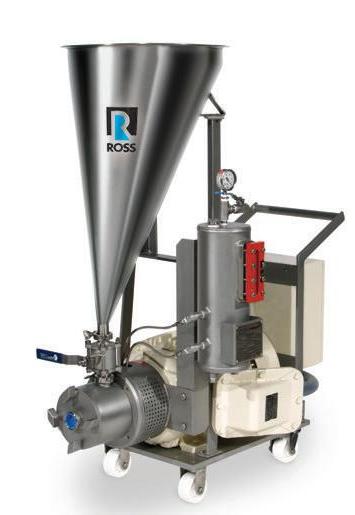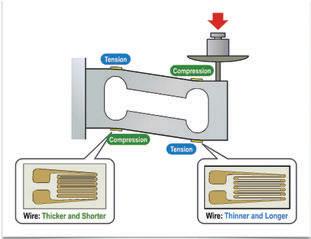
17 minute read
Packaging Technology
MATT REYNOLDS | EDITOR, PACKAGING WORLD
Extended Shelf Life Is Key to Lidl’s Latest RTE Line
Using a process-in-pack technology, the German grocery giant added shelf life to ready-to-eat meals that will extend their market range.
GERMAN GROCERY GIANT Lidl recently launched three ready-to-eat (RTE) meals made with a refrigeration technology that provides a much longer shelf life. Released under its Chef’s Select brand into the Swedish market, the three meals—Meatballs with Mashed Potatoes, Sausage Strogano , and Pasta Pomodoro—are made by long-time Lidl partner Smålandskräftan, a Swedish cookery and private-label food producer.
Smålandskräftan employed the Micvac method on the ready-made meal applications—a patented method that a ords the products a far longer shelf life compared to other ready meals, without compromising on taste, nutrition, or consistency, according to Micvac. The meals are produced and chilled, not frozen, and only require warming by the consumer.
“Our ready meals produced with the Micvac method taste as if they’re homemade. We have great faith in this launch, and are also planning to introduce the dishes abroad,” says Alexander Weiss, purchasing manager for food at Lidl. “We were very interested when Smålandskräftan told us about the technology, and the products have not let us down.”
The Micvac method
The meals are produced with a microwave application that cooks food in its package. On the packaging and processing line, thermoformed polypropylene (PP) trays supplied by Faerch plast are denested and conveyed to a depositor that fills them with the raw ingredients. Next, the trays are lidded with a PP/PA laminate film. The lidding material is sealed to the tray in a sealing machine from G.Mondini. A specialized valve that allows steam to vent from the package is then applied to the lidding material of each sealed tray, but the mechanism only allows venting to occur after a pre-determined pressure is reached during the next process, which is a microwave cook.
When the cooking process is finishing, and the pressure inside the sealed tray reduces, the valve recloses to maintain a barrier for the cooked food. The finished, cooked tray maintains a negative internal pressure. Secondary packaging involves a printed paperboard bellyband, which is automatically applied after the tray is su ciently cooled. Compared with many other ways of making ready meals, Micvac says its method better preserves vitamins and flavor. This means that the artificial E-number additives can be minimized.
“For me as a purchaser, it’s extremely important that the products have as long a shelf life as possible without a ecting the quality, and the Micvac method makes sure they stay fresh for a very long time,” Weiss says. “Since they were only recently launched, we don’t have any statistics yet, but we believe they’ll reduce food waste.”
PHOTO COURTESY OF LIDL
Lidl launched three ready-to-eat meals made with the Micvac method, which provides a much longer shelf life than other ready meals.
Plans for an international launch
The products have been well-received on the market since their launch in November 2020, Lidl reports, and the ambition is to launch them on additional European markets moving forward.
“I truly believe in the Micvac method, and in the longer term, I hope we can export these dishes to other Lidl countries,” Weiss says. “Taste is of course subjective, but many find that dishes made using the Micvac technology taste delicious—as if they were homemade, even. We have long been looking to develop the ready-meal segment, and with this method we can do so with products of high nutritional content, which also taste great and look appetizing.”
Micvac
www.micvac.com
Faerch plast
www.faerch.com
G.Mondini
www.gmondini.com
Partnership Focuses on Replacing Single-Use Plastics
PULPAC, PA CONSULTING, AND SEISMIC
SOLUTIONS announced that they will be working together to replace single-use plastics with a sustainable, a ordable alternative. The technology behind the global partnership comes from PulPac, which has created Dry Molded Fiber—using renewable pulp and cellulose resources to produce low-cost, high-performance, fiber-based packaging and single-use products. PulPac’s Dry Molded Fiber is a patented manufacturing technology that provides up to a 90% lower CO2 footprint at the same or lower cost as plastic. It enables high-speed manufacturing and can replace most packaging and single-use products presently made of plastics, including soda and co ee cup lids, meat trays, food carry-out containers, and bottles.
The partnership will focus on accelerating the replacement of single-use plastics with packaging that is both sustainable and commercially competitive.
The technology is licensed to packaging manufacturers and brands setting up their own production. Today, the partnership has cooperation and licensing agreements with a number of selected customers, including several large global brands operating in food and beverage, beauty, toys, healthcare, and other industries.
▲ The PulPac Tech Center in Gothenburg, Sweden, shows o trays made from its Dry Molded Fiber technology.
PHOTO COURTESY OF PULPAC
PulPac
www.pulpac.com
PA Consulting
www.paconsulting.com
Seismic Solutions
www.seismicoutcomes.com
GREAT PRODUCTS GREAT IDENTITIES
LABELING AND SLEEVING SOLUTIONS
As more and more brands and SKUs enter the market, how do you make your product stand out from the crowd? A great brand identity supported by great graphic designs is one way to create a competitive edge. P.E. Labellers and Axon, product brands of ProMach, offer labeling and sleeving systems that can accommodate a virtually unlimited range of container types, shapes and sizes. From P.E. Labellers' pressure sensitive, cold glue, hot melt and roll-fed labelers to Axon's shrink sleeve and stretch sleeve labeling systems, we offer the broadest range of labeling technologies in the industry. If you have a product that needs a label, a shrink sleeve or a stretch sleeve, give us a call to discuss your application.
PERFORMANCE, PACKAGED
JOYCE FASSL | EDITOR IN CHIEF


Commitment, collaboration, and communication are essential for building a successful food safety culture. But don’t forget that people at all company levels are the dominant factor in producing high-quality, safe food and beverages.
BACK IN THE 19TH CENTURY, author Alexander Dumas empowered “The Three Musketeers” with the famous mantra: “All for one and one for all, united we stand, divided we fall.” The same philosophy can be applied to building a food safety culture. Unless your facility has buy-in from all sta levels, you may have a tough time getting your food safety culture program o the drawing board.
During a recent webinar, Liliana Casal-Wardle, senior director for food safety and supply chain risk management at The Acheson Group (TAG), discussed the 10-year strategy from the U.S. Food and Drug Administration (FDA) to enhance the capabilities of the Food Safety Modernization Act (FSMA) through its New Era of Smarter Food Safety program. Casal-Wardle reviewed the four core elements of the FDA’s new strategy: • Tech-enabled traceability • Smarter tools and approaches for prevention and outbreak response • New business models and retail modernization • Food safety culture
“It’s a big group of people that have the same shared values, beliefs, and norms,” Casal-Wardle said about building a food safety culture. “People feed into those values and create a cohesive model that has a little bit of the input of each component, of each person, and of each individual as part of the culture.”
As a director of quality for Conagra Brands, Shawn Fear says a food safety culture is built upon a combination of employee engagement, e ective training programs, adherence to documented policies and procedures, and a continuous improvement mentality.
“We have a comprehensive, enterprise-wide approach that is measurable and enables us to make high-quality, safe food each and every day,” Fear states. “This requires a great deal of commitment and collaboration by teams across the enterprise that are involved with product development, sourcing, production, packaging, warehousing, distribution, and customer service.”
Food safety and quality are foundational to the trust customers and consumers have in Smithfi eld Foods and its brands, according to Warren Dorsa, senior vice president of food safety and quality assurance at the company. “We employ rigorous systems and exacting procedures, including more than 40 internal policies, to ensure we continue to deliver consistently high-quality products,” he states. The meat processor’s quality-assurance plan is built on the Hazard Analysis and Critical Control

Smithfi eld moved quickly at the outset of COVID-19 to implement protocols mitigating the risk of viral transmission by employing barriers, masks and shields, and enhanced air purifi cation systems across its facilities.









Point (HACCP) management framework and is a living document that is continually updated to adhere to best practices and industry innovations.
Smithfi eld also continuously monitors U.S. Department of Agriculture (USDA) safety and quality regulations, and in-house labs inform and lead the implementation of any new test requirements. The company has Global Food Safety Initiative (GFSI) certifi cation, which drives continuous improvement in food safety management systems internationally, adds Dorsa.
GFSI certifi cation also includes audits conducted by Safe Quality Food (SQF), Brand Reputation through Compliance Global Standards (BRCGS), International Food Standards (IFS), and ISO 22000. In addition, Smithfi eld enhances its food safety culture by relying on its suppliers to provide high-quality ingredients. All Smithfi eld vendors must comply with GFSI and HACCP requirements.
Empowerment, measurement, and recognition
When employees have a voice, they become part of the solution, according to Joni Fagan, vice president of quality control at Ken’s Foods. “Food safety is everyone’s responsibility,” she says. “This is included in job descriptions, training, and specifi c job tasks. Expectations of food safety culture become behaviors.”
Leadership buy-in and continuous support of the food safety culture is mandatory, Fagan adds. Ken’s Foods fosters an environment of PHOTO COURTESY OF GTI collaboration, where sta listens and enlists the help and knowledge of the workforce. An automatic handwashing station and signage remind GTI sta
In the cannabis edibles industry, it’s that a food safety culture is mandatory. important to build a food safety culture that the leadership team embraces by showing and pre- at a Florida facility, has implemented a quality and senting expectations themselves before rolling out food safety presentation board, where the company the program to hourly workers, says Wendy Uhls, presents a new food safety topic each month. “Last quality and compliance manager for Green Thumb month, we refreshed the GMP [good manufacturing Industries (GTI). “We’ve actually implemented some practice] policy for the whole plant and put a copy of new roles recently, where hourly workers own more the GMP policy up with the training that we had done of the quality piece, are able to provide feedback up in PowerPoint,” she explains. “Every month, we’ll do through the chain, and own that space,” she says. a di erent topic just to get the team involved.”
Uhls’ facility also uses a “best buds” program. Smithfi eld invites employees to “audit” the prod“Whenever we catch somebody doing an awesome ucts they’ve helped produce. Cross-functional teams job of complying or just being a supportive member of sta representing all levels of the organization of the team, we provide coins that employees can col- are invited to appraise products daily. This program lect over time,” she says. Depending on the number underscores how critical safety and quality stanof coins they acquire, employees can choose from an dards are and instills a sense of employee ownership. array of goodies, such as hats, shirts, and GTI products. Through its “Raise Your Hand” campaign,
GTI’s Janet Sullivan, quality compliance manager Smithfi eld empowers employees to stop production


Dispersion Genius


The ROSS Solid/Liquid Injection Manifold (SLIM) system saves time and money on your bottom line.
Engineered to accelerate mixing in challenging applications, the SLIM instantly disperses hard-to-mix powders like xanthan gum, calcium carbonate and pectin into a liquid stream. Directly induct powders at rates up to 700 lbs/min and cut processing times by 80% or more. By preventing the formation of agglomerates, the SLIM helps ensure the maximum yield of solids.
No pump, eductor or clogging. In-line and batch models are portable to serve multiple process lines.

Powder Inlet
Completed Dispersion Liquid Inlet
Try our free online Knowledge Base & Product Selector web app at mixers.com/web-app.
www.mixers.com/SLIM • 1-800-243-ROSS
The culture paradigm
TASK-BASED
Matrix driven by work Collaborative Equal visibility among all departments QA/QC is the gatekeeper Solutions-driven Findings seen as opportunities Equal ownership Empowered employees “It’s our problem”
ROLE-BASED
Hierarchy/driven by title Con icting agendas Unbalanced representations and diminished capacity QA/QC is the police of cer Problem-focused Blame placed on ndings No ownership of tasks Powerless employees “It’s not my problem”
IMAGE COURTESY OF THE ACHESON GROUP (TAG) AND SAFETYCHAIN. FSMA FRIDAYS, “BUILDING AN AUDITABLE, MEASURABLE FOOD SAFETY CULTURE.”
if they see anything throughout the day that a ects food safety or quality. The company recognizes employees who identify potential product safety or quality hazards.
At Smithfi eld, employees learn from day one that food safety is non-negotiable. The company’s goal is zero product recalls, which it achieved in 2019. As a vertically integrated company, Smithfi eld is collaborating with FoodLogiQ’s Food Industry Blockchain Consortium and the IBM Food Trust to drive customer visibility into food safety and quality assurance, and to increase transparency.
GTI measures customer complaints using key performance indicator (KPI) boards. “We’re looking at customer complaints, third-party audits, and our Department of Health inspections, so we’re taking all of those, and we try to present those every month,” says Sullivan. “We don’t want to have any fi ndings from the Department of Health, and we don’t want to have any GMP fi ndings. We want to make sure that our customers are happy, so we try to get customer complaints down to zero.”
Currently, GTI facilities are preparing for SQF certifi cation. Learn more about GTI’s food safety culture in the sidebar below.
According to Casal-Wardle, measuring the culture is not about checking your critical control points and then thinking you’re fi nished. “That’s great,” she says,
Cannabis Food Safety Culture
GREEN THUMB INDUSTRIES (GTI) is a consumer packaged goods company and retailer that manufactures and distributes a range of cannabis products. Headquartered in Chicago, the company owns and operates national retail cannabis stores called Rise. GTI has 13 manufacturing facilities, licenses for 97 retail locations, and operations across 12 U.S. markets.
The food safety culture at its facilities is nearly identical to those at food and beverage plants, but is ramped up to meet cannabis regulations.
“If one of us fails, we all fail, especially being a new industry,” says Wendy Uhls, quality and compliance manager. “Right now, it’s not federally legal. If one of us has any sort of major incident, that could take us down. We can’t risk that. We’re doing everything that we can to make sure that doesn’t happen on our end. We must have a very specifi c fl ow with traceability that’s probably a little more than what the food industry has.”
Janet Sullivan, quality compliance manager for GTI, agrees. Even though GTI’s Homestead, Fla., facility does not currently produce edibles, it still follows all FDA, state, and local regulations. “We make sure that we have our asset plan, the allergen control, and all the regular GMPs that any food plant would have,” she states.
At present, the Florida facility is producing oils and tinctures. Sullivan was hired by GTI for her broad range of food safety experience to handle edibles when her facility starts the production process. “I have the background to make sure we have the right controls and programs in place to be able to handle those edibles when we do get them,” she says.
Changing the culture has been a bit of a challenge, Sullivan says. “People have been here for several years, and here I am, the new person, coming in trying to change the culture. The biggest obstacle so far is just to get them onboard with the food safety piece, and how to develop that into the facility,” she states. “It’s just changing people’s mindset on what they had been doing before.”
Uhls says one of her biggest challenges is training employees who come from outside the food industry. “We’ve got a lot of workers coming from textiles or other industries that may not necessarily have the same standards,” she states. The good news is that most of the workers are fairly young in their careers, so Uhls says she is able to embed the needed knowledge early, which is a defi nite benefi t.
As would be expected, the cannabis industry is heavily monitored. In Illinois, for example, the Department of Agriculture monitors all processes, has access to facility cameras, and performs weekly virtual inspections. In addition, Illinois State Police conduct monthly in-person surprise visits.
In Florida, the Department of Health regulates production. “We have a whole book of regulations to follow, all the way from where the employees come in through the door, and all the way through our green waste being disposed of at the end of the day,” says Sullivan. Florida workers must be fi ngerprinted and undergo a check with the Department of Health to ensure potential employees have no past history of felonies or drug convictions, for example.
Auditing Food Safety Culture
What will the GFSI auditor look for?
• Evidence of a plan with objectives and targets around food safety culture and evidence of the site completing the activities in its action plan • Senior management’s commitment and leadership that enable the development and continuous improvement of the culture • Management of communication related to food safety behaviors and programs • Empowerment of the workforce through education and training • Feedback from employees through interviews across all levels of personnel on an informal basis (The auditor will expect to fi nd an awareness of food safety culture, how individuals can impact it, and the company’s objectives.) • Performance measurement on food safety-related activities • Evidence of a plan with objectives and evidence of the site completing the activities in its action plan • Rewards and recognition of employees
Source: The Acheson Group (TAG) and Safetychain. FSMA Fridays, “Building an Auditable, Measurable Food Safety Culture.”
“but look at how the people are managing it. Look at how they’re doing it. Are they doing it on time? Is it something that is consistently being done? Because that shows you where you are in the culture model.”
Casal-Wardle also discussed the culture parodies of task-based and role-based programs during the FSMA Fridays webinar conducted by TAG and Safetychain on “Building an Auditable, Measurable Food Safety Culture.” “A task-based culture is a matrix driven by work,” she explained. “People are related in that culture through the work they do.” In contrast, she said, a role-based culture is driven by hierarchy and its chain of command.
“A task-based culture is collaborative,” she continued. “And a role-based culture can have confl icting agendas, because the manager might want something di erent than what the operator is doing, or the director thinks that the manager is doing something di erent than what they’re doing.” In a task-based culture, employees have equal ownership and are empowered. To learn more about role-based and task-based cultures, see the box on page 24.

Sage advice
Your food safety culture must be adaptable, Casal-Wardle says. She recommends having clear expectations of your current food safety state and adapting to the changes that come either internally or externally. “Change is creating a new habit. In creating a new habit, you have to create the tools for the people to understand why you are changing it, and how that is going to help them, and why it is important.”
She says communication is a key factor in the success of the culture. “Explain the objectives, manage the objectives, be open to questions,” she declares.
Uhls says food safety is an ongoing process. “Partner with everyone you can to fi nd the best systems to implement any way you can,” she states. “Share what you can, and do the best you can.”
Sullivan concurs, but adds, “Don’t give up. Reach out to companies, places, or people that can help you with what you’re struggling with.”
Fear says it is critical that everyone understand the role they play in making food safety a top priority. He says Conagra Brands is committed to training and empowering people to identify potential issues and improvement opportunities, and then following through by taking the right actions. After all, Fear states, “the most discerning judges are customers and consumers.”
FoodLogiQ
www.foodlogiq.com
Safetychain
www.safetychain.com
The Acheson Group (TAG)
www.achesongroup.com






